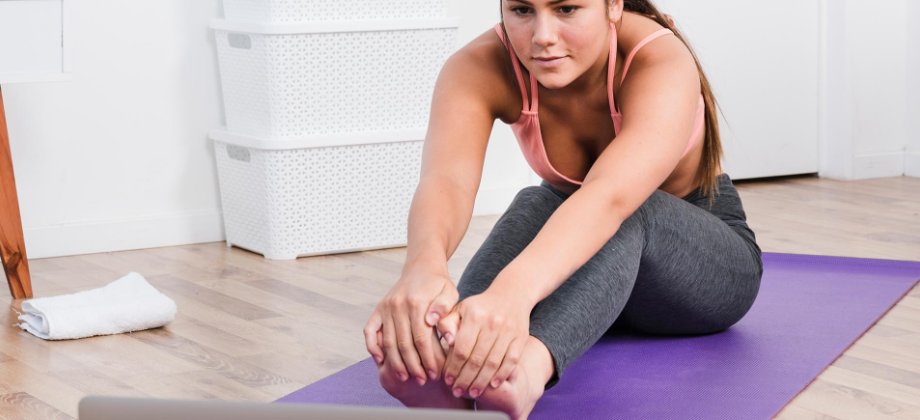
Yoga Live! The Yoga Class of Today and Tomorrow
Since most of us are practicing social distancing to help out humanity, how do we impart our classes in the most effective and timely manner? Through Live streaming, we can reach out to our existing students as well as to potential people who need their daily dose of movement, mindfulness, and inner peace. How do we start? What do we need and where can we start broadcasting?
Through Live streaming, we can reach out to our existing students as well as to potential people who need their daily dose of movement, mindfulness, and inner peace.
I have shot a lot of footage for my business. So I know some of the basic necessities to getting started, from where to post them and the like. In this article, We’ll talk about everything I know about getting started. I’ll go over some tricks I do to get better light, what view is best, and making the most out of the stuff you have on-hand. Remember, you don’t need to have all the professional features. You only need a clear voice and view. Everything follows from there Here we go!
What is Live Streaming?
Live-streaming is a live broadcast of your video recording online. You are the star, director, producer, writer, and showrunner of your own yoga show. When I put it that way it sounds nerve-wracking right? Sorry! Anyway, The good thing is that you have the potential to reach far more people than you would with studio classes. The bad news is that a bad teaching day can have a bigger reflection on you than your traditional class set-up. The silver lining is that everything can be prepared for.
What do you need for live streaming?
As long as you have a camera of some sort, Whether it’s a smartphone, GoPro, or your DSLR, all of these things can be rigged to live-stream your videos with a few accessories. I’ve attached some YouTube links below to help you make the right choice in your upcoming investments. How do you know which ones are the best? That depends on the space you have available, the lighting in said space, and the background noise that circulates in that area. Take a look at your chosen spot for your video-recording. And ask yourself these questions:
- Will you be able to take a shot that shows your body from all angles or at least a full profile view when you set up the camera?
- Will you be heard clearly despite the distance between you and the mic?
- How much background noise do you have? And can you film at a quieter time of day in your household?
These are some practical things to note when you are about to start. It may feel like there are so many things to consider but it actually doesn’t take a long time to finish with your assessment. Personally, I haven’t started giving live classes, nevertheless, I have shot a lot of video footage and photos for my business. For me here are some of the essential equipment that I consider as necessary:
- Camera, phone, GoPro or Webcam
- Good Internet connection
- Tripod - the tripod you get depends on the camera you have
- Light - a study lamp works fine.
- A mic - I prefer a shotgun mic that attaches to the camera. I wireless body mic bothers me as I move. You can modulate your voice to fit the class.
Reference Links for equipment:
Platforms for Live streaming
There are a few platforms to live stream your classes:
Zoom - Most yoga studios decide to use Zoom, which is an easy-to-use video conferencing tool. Zoom is originally used for video conferencing, this platform can easily be adapted to fit your classes. You can use Zoom in combination with Momoyoga perfectly. We want to do everything we can to help you connect with your yogis. That’s why we’ve added online classes to Momoyoga. Hopefully, with this new feature, we can encourage you to resume teaching.
Teachable - This platform is a little lighter on the wallet while not scrimping on the features that make it so great. At $29-$79 billed annually you can start something. Your cyber-school will have its own domain and can easily be linked to your existing website.
Udemy - Probably the most famous one of all and can garner more engagement than the previous options above. The things is, these platforms oblige you to be part of their grand sales. So if you price your course or classes at $99 and suddenly Udemy gives a 75% discount? You’ll only receive $25. Another bummer is that Udemy splits your earnings with you 50%. According to Mompreneurmoney, she said that Udemy has tweaked their business model recently. So you’ll have to check it out if this is the right one for you. Here’s a link to their new revenue sharing plan
Namastream - Namastream is a place where you can create live-stream programs with no technical expertise. With Namastream you can have both classes, courses and live connectivity with your students in one place. The downside is that it comes with a pretty hefty price tag. At $125 a month, $1250 a year, you have to be sure that this is where you want to go with your business. IT will be hard to turn back once you sign up with them.
Wix and Wordpress - For the yoga bloggers out there, in case you didn’t know the platforms Wix and Wordpress offer live-streaming on their platforms. Youtube also offers YouTube live but you might want to check out their requirements.
All these Livestream platforms come with their own payment plan and transaction fees. Choose carefully which one you prefer to be tied to. Depending on their features and policies, you might find yourself stuck.

Tips and tricks for shooting
- Find a spot near a window so you can get natural light. If you are lucky enough to have a space near the window this is a great advantage for you. Your shot will come out much clearer. Just make sure your camera is not shooting against the light.
- Clear the room or corner of any visible clutter. You might have them in your shot. It can be very distracting to your audience. However having a plant in view can be very soothing. I’ve seen this with many online yoga teachers. It is quite comforting when I take their classes.
- You can either get a profile view or diagonal view. From a diagonal perspective, it’s a great way for your audience to see you from all angles. They will see the distances between your feet, your alignment, etc. The setback is is that this position requires space in relation to your lighting and camera position. If you don’t have this. Then a profile view works just fine.
- Don’t shoot yourself from a low angle. It does not look pretty.
- Try to get the most linear shot possible. Get the angle that is most natural to your eye. From up top, it looks like a selfie, too low and you will play up every flaw.
- You might need more lamps if you shoot at night or if your place is in the interior part of your house. Like I said a study lamp or 2 works great. Try different things for different effects.
- As with any class. The key is preparation. Make sure that before you go live, to prep your class well and think about your verbal cues. Effective instruction is key for your students. So study your voice modulation with the distance of the mic, your content, the scene, before you go on air.
- I was in the theater for years. One thing that I’ve learned is that the show must go on. So what do you do if you forget a line? Anything! Laugh it off, make a joke, whatever you can to transition back into the sequence even if you have to wing it. My point is that it’s ok to make a mistake. You’re human! The important thing is that your audience doesn’t notice it.
There you have it! We have defined live streaming. We discussed the basic equipment. More importantly the services available online to be able to broadcast your work. Lastly, I gave you my personal tips and tricks to making a successful broadcast.
It's the small details that you put into your work that will make the whole thing come together.
The main take-away from this article is that your success in this endeavor depends on your preparation. It's the small details that you put into your work that will make the whole thing come together.







